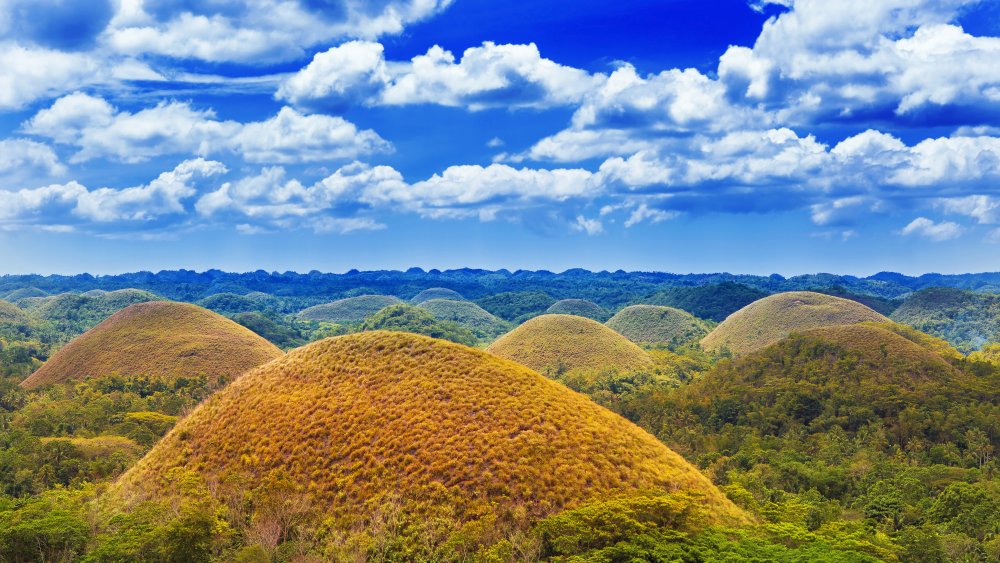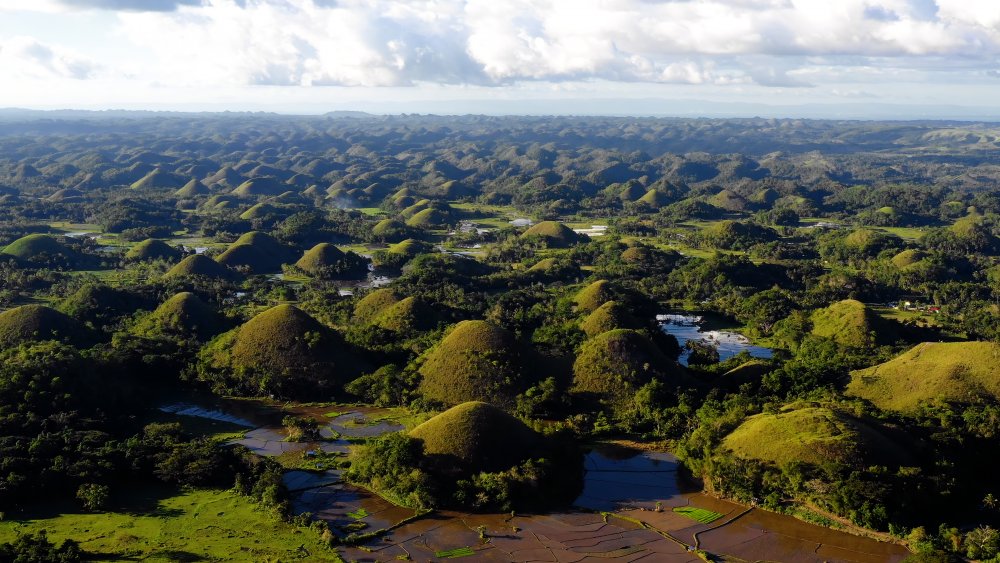The Strange Origin Of The Philippines' Chocolate Hills
The Chocolate Hills in the Philippines is a geological wonder to behold. They look small, but up close, they're huge. If you see a photo, you might get confused since ... well, they're green, thanks to the Philippines' lengthy monsoon season. But the hills, called chocolate because of the color they take during the dry season, hold several secrets.
The hills dot a vast terrain and they look perfectly symmetrical. Hundreds of people marvel at them every day. They're one of the most popular tourist destinations in the province of Bohol. So how did the Chocolate Hills come about? If you ask people in Bohol, where the hills are located, you might hear different stories, wroteCulture Trip. One legend goes that two giants started fighting each other, flinging mud at each other. Once they stopped, some retellings say, the giants died from exhaustion. All that was left were large mounds of mud that eventually became the Chocolate Hills. According to Travel + Leisure, another legend claims the hills were formed from the tears of a god whose mortal love died.
While legends sometimes mask a scientific explanation for the hills' formation, even science is a little iffy about how the Chocolate Hills formed. The hills are made of limestone, though several theories arose to explain how so many dot the terrain.
The Chocolate Hills might have been born of a volcano
The University of Melbourne explained the Chocolate Hills are what geologists call a karst feature, where erosion shapes the topography. The surrounding farmland also has rivers, caves, and underground springs that helped form its structure. But scientists aren't sure where the limestone came from, says Atlas Obscura. One possible theory is that the area may have hosted a volcano that self-destructed, leaving limestone deposits behind. But it could have been an oceanic volcano as well, with limestone coming from ancient coral reefs.
Rainfall and the underground springs contributed to shaping the hills. There's no official count how many there are, though some estimates are as high as 1,268 hills, mostly ranging from 100-160 feet in elevation. The tallest peak is 400 feet. Some of the hills have housing structures and roads, but don't think you can climb any of them unless you're a local. Tourists can view the Chocolate Hills from several viewing platforms. (And after you've marveled at the hills, there's a nearby tarsier sanctuary)
The Chocolate Hills are magnificent to look at, and it's even more interesting to imagine the strange way they came about.

